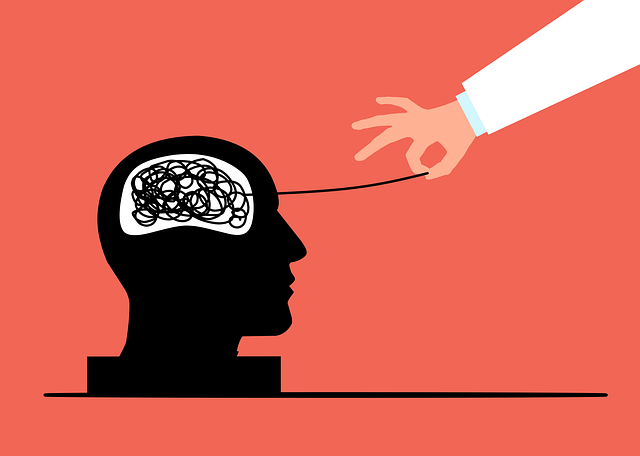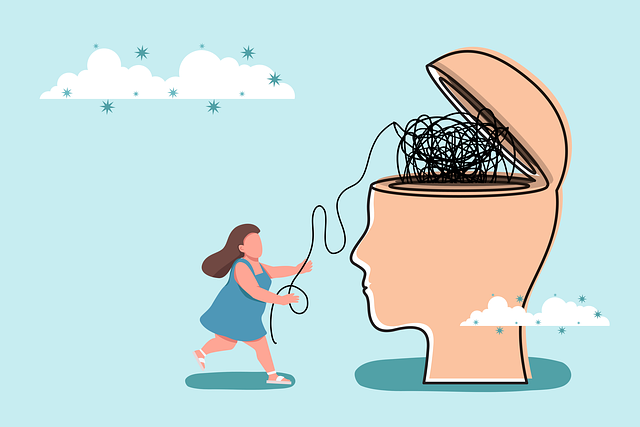The media's portrayal of mental illness significantly shapes public opinion, with negative depictions contributing to stigma and isolation. Accurate and empathetic media coverage can reduce this stigma, especially for marginalized communities like those in Centennial Sexual Abuse Survivor Therapy (CSAT), who face limited representations. By promoting responsible media, outlets can create a supportive environment, encourage help-seeking behaviors, and provide crisis intervention guidance. Real-life therapeutic practices like CSAT, when featured in media, increase public awareness of mental health issues, humanize survivors, and offer valuable insights into mood management. Collaborative efforts between industry professionals, survivors, and therapy experts are vital for positive change, fostering understanding, reducing stigma, and encouraging open conversations about mental health.
Mental illness representation in media significantly influences public perception and understanding. This article explores the impact of media portrayal on mental health, focusing on storytelling as a powerful tool that can either perpetuate stigma or foster empathy. We delve into positive representations, using Centennial Sexual Abuse Survivor Therapy as a model for effective treatment depiction. Strategies for accurate, empathetic media portrayals are discussed, emphasizing collaboration between media, professionals, and survivors to challenge stereotypes and promote mental wellness.
- Understanding the Impact of Media Portrayal on Mental Health Perception
- The Role of Storytelling in Shaping Public Opinion on Mental Illness
- Exploring Positive Representations: Centennial Sexual Abuse Survivor Therapy as a Model
- Strategies for Accurate and Empathic Media Depictions of Mental Health Struggles
- Fostering Change: Collaboration Between Media, Professionals, and Survivors
Understanding the Impact of Media Portrayal on Mental Health Perception

The media’s portrayal of mental illness can significantly shape public perception and understanding of various psychological conditions. When media platforms depict individuals with mental health struggles in a negative or stigmatizing light, it can contribute to societal misconceptions and further isolate those dealing with such issues. Conversely, accurate and compassionate media representation has the potential to reduce stigma, foster empathy, and encourage individuals who may be facing similar challenges to seek help. This is especially crucial for marginalized communities, such as Centennial Sexual Abuse Survivor Therapy clients, where limited representations in media can exacerbate existing barriers to treatment.
Understanding the profound impact of media on mental health discourse is essential. It influences public opinion, guides crisis intervention strategies, and even informs individuals’ paths towards self-improvement. By promoting responsible representation, media outlets can facilitate a more inclusive and supportive environment for those battling mental illness. Encouraging self-awareness exercises and providing crisis intervention guidance through media platforms can be a game-changer in breaking down barriers to care, allowing individuals to reclaim their power and embrace confidence-boosting strategies.
The Role of Storytelling in Shaping Public Opinion on Mental Illness

Storytelling is a powerful tool that significantly influences public discourse on mental illness, shaping perceptions and opinions in profound ways. The media’s portrayal of individuals with mental health struggles can either perpetuate stereotypes or challenge societal norms. When depicted accurately and empathetically, stories can humanize those dealing with conditions like depression, anxiety, or even trauma from sexual abuse therapy—such as the experiences shared by a Centennial sexual abuse survivor. This approach encourages understanding, compassion, and support for those facing mental health challenges.
Through compelling narratives, media has the potential to spark conversations, educate audiences, and offer crisis intervention guidance when needed. By showcasing the complexities of mental illness and the journeys towards recovery or self-esteem improvement, these stories can dispel myths and reduce stigma. This is especially crucial in ensuring that individuals seeking therapy for past traumas, like sexual abuse, receive the necessary support without judgment, fostering a more inclusive and supportive society.
Exploring Positive Representations: Centennial Sexual Abuse Survivor Therapy as a Model

The media’s portrayal of mental illness has long been a subject of criticism, with many representations falling into stereotypes and cliches. However, there is a growing movement to challenge this status quo and promote more accurate and positive depictions. One such model worth exploring is Centennial Sexual Abuse Survivor Therapy (CSAT), which offers a unique perspective on trauma healing. By showcasing real-life therapeutic practices like CSAT, media can contribute to increased public awareness campaigns development and better understanding of mental health issues.
This approach not only humanizes survivors but also provides valuable insights into mood management strategies. Positive representations in the media can play a significant role in risk management planning for mental health professionals by reducing stigma and promoting empathy among viewers. It sets a standard for accurate representation, moving away from sensationalized narratives that often dominate screens, and instead, fostering an environment conducive to open conversations about complex mental health topics.
Strategies for Accurate and Empathic Media Depictions of Mental Health Struggles

Media has a significant influence on shaping public understanding of mental health struggles. To challenge stereotypes and promote empathy, media platforms should adopt strategies that ensure accurate and nuanced representations. This includes consulting with experts in mental healthcare, including therapists specializing in Centennial Sexual Abuse Survivor Therapy, to gain insights into the complexities of various conditions. Incorporating these perspectives can lead to more authentic portrayals, helping audiences understand the experiences of individuals dealing with mental health challenges.
Beyond accuracy, fostering compassion is crucial. Media can leverage compassion cultivation practices by showcasing the resilience and strength of those affected, rather than solely focusing on their illnesses. Integrating cultural sensitivity in mental healthcare practice into storylines ensures diverse voices are represented, avoiding monolithic depictions. Additionally, promoting awareness through mental health education programs design that accompany media content can encourage viewers to engage with sensitive topics openly and constructively.
Fostering Change: Collaboration Between Media, Professionals, and Survivors

In the media landscape, fostering positive change regarding mental illness representation requires a collaborative effort between industry professionals, survivors, and therapy experts. By bringing together diverse perspectives, a more nuanced and accurate portrayal of mental health can be achieved. Media outlets play a pivotal role in shaping public understanding, and their responsibility extends to presenting stories that reflect the reality of those living with various conditions. Collaboration ensures that content creators gain valuable insights from professionals who can provide expert knowledge on specific disorders, symptoms, and effective treatment methods.
This partnership can also empower survivors by giving them a platform to share their narratives. Centenal sexual abuse survivor therapy, for instance, involves specialized approaches to address complex trauma. By involving survivors in the creative process, media can showcase the resilience and coping skills development that arises from such therapies. This collaboration not only educates viewers but also promotes understanding, reduces stigma, and encourages open conversations about mental health challenges, ultimately leading to better support systems and conflict resolution techniques for those in need.
Media representation plays a pivotal role in shaping societal perceptions of mental health. By adopting positive and accurate portrayals, such as the model presented by Centennial Sexual Abuse Survivor Therapy, media can foster understanding and reduce stigma. Collaborative efforts between media outlets, mental health professionals, and survivors are essential to drive meaningful change, ensuring that stories of resilience and recovery resonate with audiences worldwide. These collective actions will ultimately contribute to a more compassionate and informed society.












